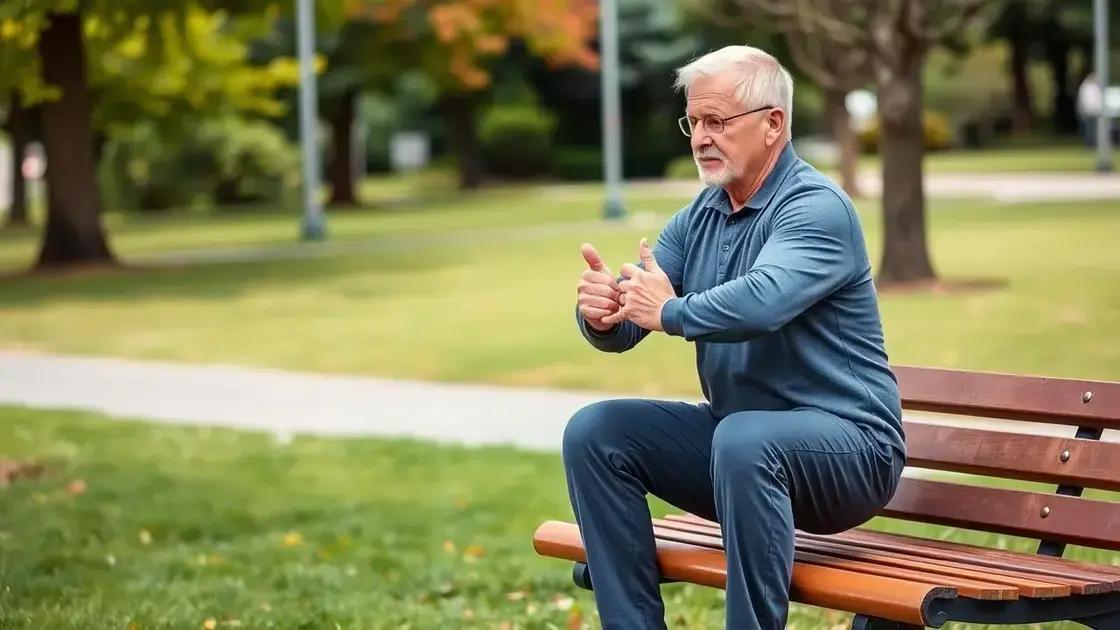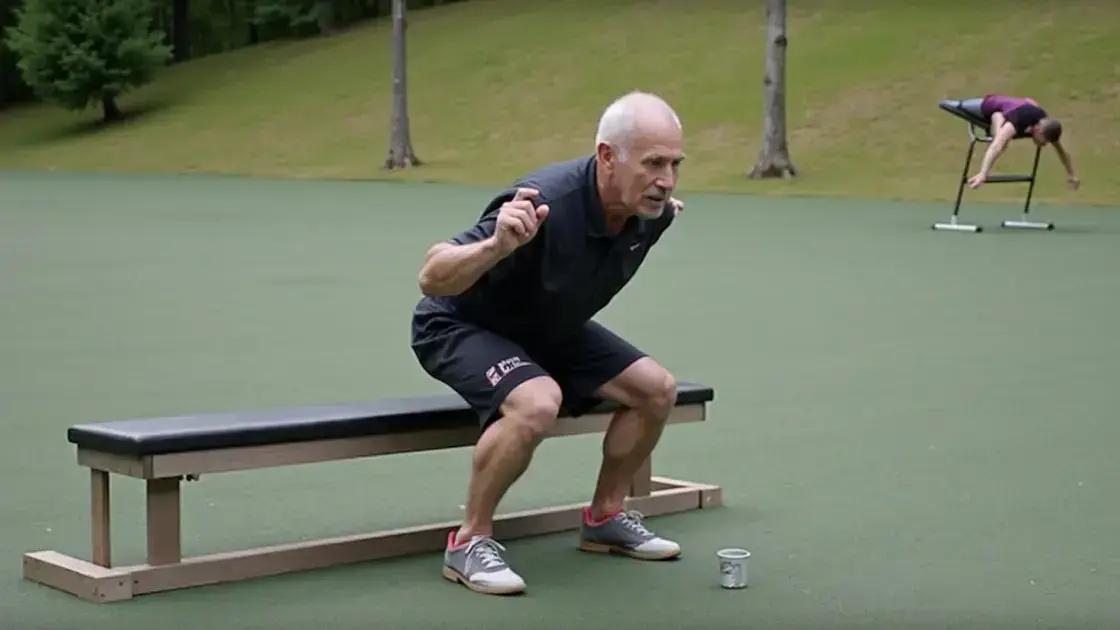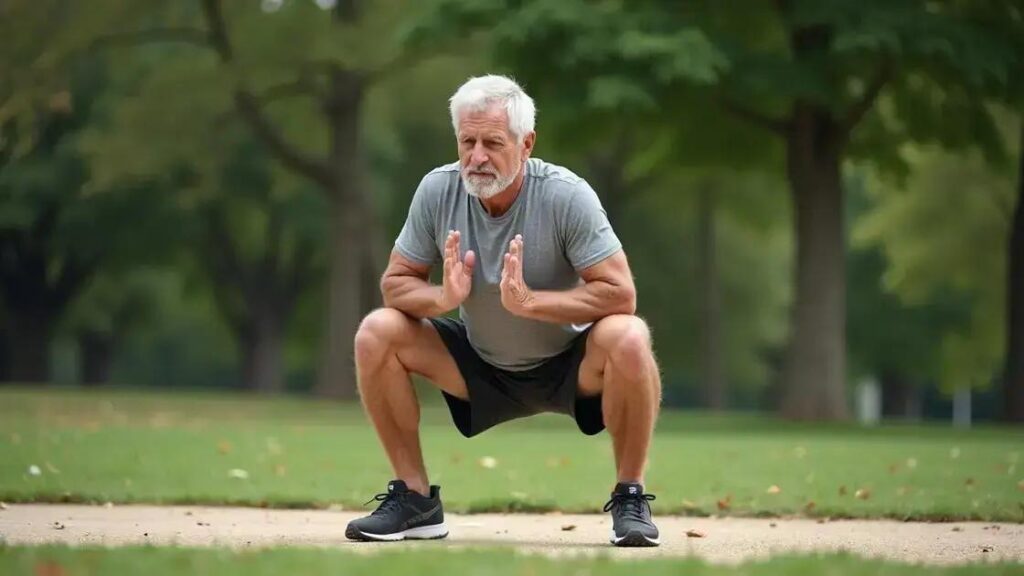Bulgarian split squats are a valuable exercise for individuals over 50, enhancing lower body strength, balance, and flexibility. To perform them safely, maintain proper form by keeping your knee behind your toes, engaging your core, and avoiding common mistakes. Start with body weight, gradually adding resistance, and always warm up before exercising to prevent injuries.
As we age, staying active becomes crucial for maintaining health and wellness. How to safely perform Bulgarian split squats after 50 can enhance your strength and stability. This exercise promotes balance and strengthens your lower body, making it perfect for older adults. In this article, we’ll outline the key benefits of Bulgarian split squats, provide a step-by-step guide on how to do them correctly, and highlight common mistakes to avoid. Let’s ensure your workout routine remains effective and safe!
Understanding Bulgarian Split Squats

Bulgarian split squats are a powerful exercise that targets your legs and glutes while also improving your balance. Unlike traditional squats, they are performed with one foot elevated behind you on a bench or step. This positioning increases the range of motion and adds a challenge to your workout.
What is a Bulgarian Split Squat?
The Bulgarian split squat is a unilateral movement, meaning it works one leg at a time. This is beneficial as it helps identify and correct muscle imbalances between your legs. By focusing on one leg, you can enhance stability and coordination.
How to Perform Bulgarian Split Squats
To execute this exercise, start by standing a few feet in front of a bench. Place one foot on the bench behind you. Keep your chest up and shoulders back as you lower your body into a squat, bending your front knee. Aim for your front thigh to be parallel to the ground, and ensure your knee does not extend beyond your toes. Push through your front heel to rise back to the starting position.
Muscle Groups Targeted
This exercise primarily works the quadriceps, hamstrings, and gluteus maximus. Additionally, it engages your core for stability. As a compound movement, Bulgarian split squats are effective for increasing overall strength and can be adjusted to suit different fitness levels by changing the load or resistance.
In summary, understanding Bulgarian split squats means recognizing their impact on strength, balance, and muscle engagement. By incorporating them into your routine, especially after 50, you can maintain an active lifestyle and improve your lower body strength.
Benefits for Individuals Over 50

Bulgarian split squats offer numerous benefits for individuals over 50. As we age, maintaining muscle strength and balance becomes increasingly important. This exercise targets specific muscle groups and helps prevent falls, which are a common concern in older adults.
Improved Balance and Stability
One of the primary benefits of Bulgarian split squats is that they enhance balance and coordination. Standing on one leg while performing the squat forces your body to engage core muscles, promoting better stability.
Increased Lower Body Strength
This exercise also develops strength in the lower body. The quadriceps, hamstrings, and glutes are heavily activated during Bulgarian split squats. Increasing strength in these areas supports daily activities, such as climbing stairs or walking.
Joint Health and Flexibility
Performing Bulgarian split squats can improve joint health by enhancing flexibility in the hips and knees. Increased range of motion in these joints contributes to overall mobility and reduces stiffness.
Enhanced Posture
Strengthening the muscles involved in Bulgarian split squats contributes to better posture. Improved posture can reduce back pain and improve overall body mechanics, making everyday tasks easier.
In summary, individuals over 50 can benefit greatly from incorporating Bulgarian split squats into their fitness routine. This exercise not only strengthens the body but also supports mobility and reduces the risk of injury.
Step-by-Step Execution Guide

Follow this step-by-step execution guide to safely perform Bulgarian split squats. This exercise can help you improve strength and stability.
Step 1: Set Up
Find a sturdy bench or step. Stand a couple of feet in front of it. Make sure the surface is stable to support your back foot.
Step 2: Position Your Feet
Place one foot on the bench behind you. Your weight should remain on the front leg. Ensure that your front foot is flat on the ground.
Step 3: Maintain Proper Form
Stand tall with your chest up and shoulders back. Keep your core engaged to support your back. This position is crucial for avoiding injuries.
Step 4: Lower Your Body
Slowly bend your front knee and lower your body. Aim to get your front thigh parallel to the ground. Be sure your knee does not extend beyond your toes.
Step 5: Rise Up
Push through your front heel to rise back to the starting position. Repeat this movement for the desired number of repetitions.
Step 6: Switch Legs
After completing the reps on one leg, switch to the other leg. Repeat the same steps, maintaining form throughout.
By following these steps, you can safely and effectively perform Bulgarian split squats, enhancing your workout routine.
Common Mistakes to Avoid

When performing Bulgarian split squats, avoiding common mistakes is essential for safety and effectiveness. Here are some key errors to watch out for:
Improper Foot Placement
Ensure your front foot is positioned correctly. If it is too far forward or backward, it can strain your knee or back. Your front foot should be flat and directly beneath you.
Allowing the Knee to Extend Past the Toes
Avoid letting your front knee go beyond your toes during the squat. This can put unnecessary pressure on your knee joints and lead to injury.
Lack of Core Engagement
Failing to engage your core can lead to poor balance and form. Always tighten your core muscles to support your lower back and maintain stability.
Rushing Through Repetitions
Taking your time is crucial. Rushing can cause you to lose form and increase the risk of injury. Focus on slow, controlled movements.
Neglecting Warm-Up and Cool-Down
Always perform a proper warm-up before starting your workout. Stretching and light exercises prepare your muscles and joints for the strain of Bulgarian split squats. Similarly, cooling down afterward helps with recovery.
Ignoring Pain Signals
Pain is your body’s way of signaling that something is wrong. If you experience pain while performing these squats, stop immediately and reassess your form or consult a professional.
By avoiding these common mistakes, you can enjoy the full benefits of Bulgarian split squats while minimizing the risk of injury.
In Summary: Safely Perform Bulgarian Split Squats After 50
Bulgarian split squats are an excellent exercise option for individuals over 50, as they enhance lower body strength, balance, and flexibility.
By following the step-by-step execution guide and being aware of common mistakes, you can incorporate this exercise safely into your routine. Remember to maintain proper form, engage your core, and listen to your body to avoid injury.
With regular practice, Bulgarian split squats can help you maintain an active lifestyle, supporting overall health and well-being as you age. Embrace this powerful exercise to boost your fitness journey!
FAQ – Frequently Asked Questions About Performing Bulgarian Split Squats After 50
What are Bulgarian split squats?
Bulgarian split squats are a type of exercise that targets the lower body by performing a squat with one leg elevated behind you.
How do Bulgarian split squats benefit those over 50?
They improve balance, strength, and flexibility, which are essential for maintaining mobility and preventing falls.
What common mistakes should I avoid while performing Bulgarian split squats?
Avoid improper foot placement, letting your knee extend past your toes, and not engaging your core for stability.
How many repetitions should I do?
Start with 8-12 repetitions per leg and adjust based on your fitness level and comfort.
Should I use weights while performing these squats?
You can start without weights to master the form. Once confident, consider adding light dumbbells or a kettlebell for added resistance.
Is a warm-up necessary before doing Bulgarian split squats?
Yes, warming up is crucial to prepare your muscles and joints, reducing the risk of injury.













